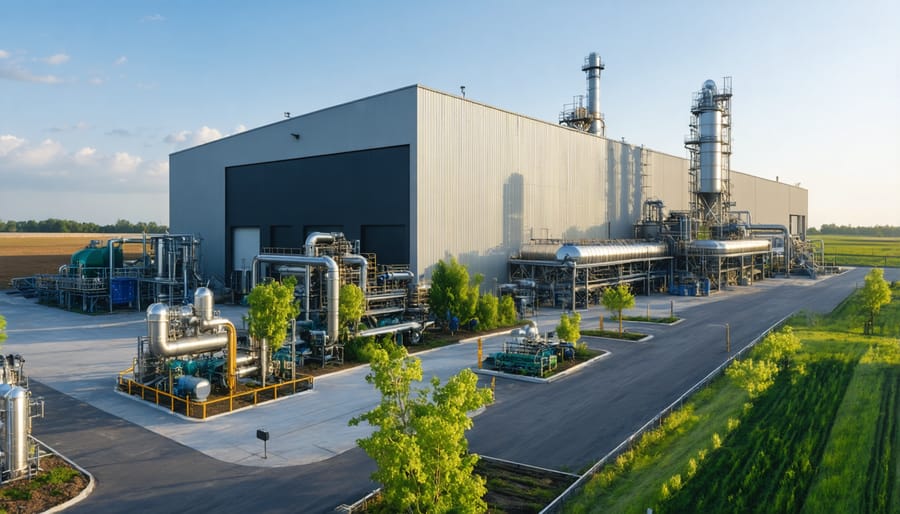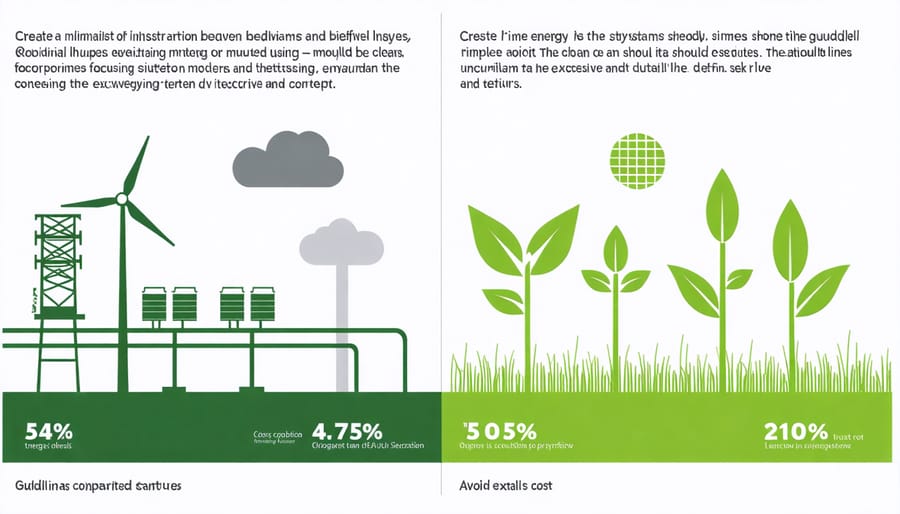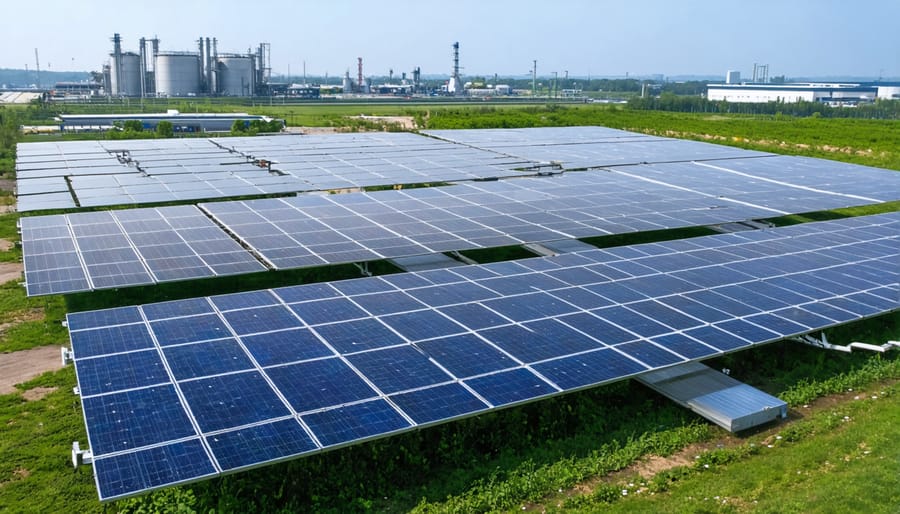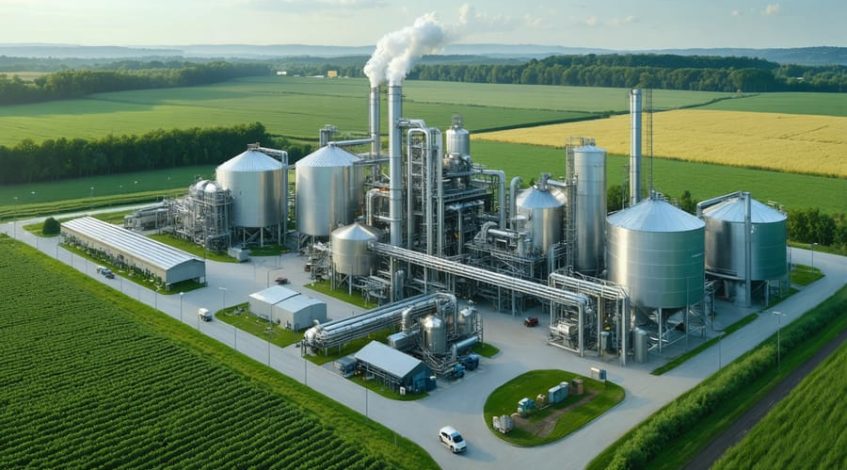In the race toward sustainable energy independence, biofuels and biomass represent a transformative opportunity for businesses and industries seeking both environmental responsibility and economic advantage. These renewable energy sources, derived from organic materials ranging from agricultural waste to purposely-grown energy crops, are revolutionizing how forward-thinking organizations approach their energy needs. With global biofuel production reaching record levels and biomass technologies becoming increasingly sophisticated, the market presents compelling opportunities for reducing operational costs while meeting stringent environmental targets.
The convergence of advanced conversion technologies, supportive government policies, and growing corporate sustainability initiatives has positioned biofuel and biomass solutions at the forefront of the clean energy transition. Modern facilities can now achieve 30-60% reduction in carbon emissions while maintaining or even improving operational efficiency through strategic biomass implementation. For business leaders and facility managers, understanding the practical applications and economic benefits of these technologies has become essential for maintaining competitive advantage in an increasingly sustainability-focused marketplace.
This comprehensive exploration will examine the latest developments in biofuel and biomass technologies, their practical applications across industries, and the critical factors for successful implementation in commercial settings.
The Commercial Potential of Bioenergy Systems
Biomass-to-Energy Conversion Methods
Biomass can be converted into usable energy through several established methods, each offering distinct advantages for different applications. Thermochemical conversion, including combustion, gasification, and pyrolysis, remains the most widely implemented approach. Direct combustion systems burn biomass to generate heat and power, while gasification converts organic materials into combustible gases under high temperatures with limited oxygen.
Biochemical conversion utilizes natural processes like anaerobic digestion and fermentation. Anaerobic digestion breaks down organic matter using microorganisms to produce biogas, primarily composed of methane and carbon dioxide. This method is particularly effective for processing wet biomass such as food waste and agricultural residues.
Emerging technologies include torrefaction, which creates energy-dense biochar through thermal decomposition, and hydrothermal liquefaction, converting wet biomass into bio-oil. Chemical conversion methods, such as transesterification, transform vegetable oils and animal fats into biodiesel.
The selection of conversion technology depends on factors including feedstock type, desired end product, scale of operation, and local infrastructure. Modern facilities often integrate multiple conversion methods to maximize efficiency and resource utilization.

Integration with Existing Energy Infrastructure
Integrating biofuel and biomass systems into existing energy infrastructure requires strategic planning but offers significant advantages for businesses and facilities. Modern biofuel systems are designed to work seamlessly with conventional power grids and can be incorporated alongside other renewable sources and energy storage solutions.
Many facilities successfully operate hybrid systems where biofuel generators complement existing natural gas or diesel systems, providing flexibility during peak demand periods. The integration process typically involves minimal disruption to operations, with most installations requiring only modest modifications to existing fuel storage and distribution systems.
Key integration considerations include fuel storage facilities, transportation logistics, and connection points to existing power distribution networks. Modern biomass boilers and biofuel systems come equipped with standardized interfaces that facilitate integration with building management systems and industrial control networks. This compatibility ensures smooth operation while maintaining consistent energy supply across various demand scenarios.
For maximum efficiency, facilities often implement smart control systems that automatically optimize the mix between biofuel and conventional energy sources based on real-time demand, cost factors, and availability.
Cost-Benefit Analysis for Businesses

Initial Investment and Operating Costs
The initial investment for biofuel and biomass facilities varies significantly based on scale and technology type. A typical commercial-scale biomass plant (5-10 MW) requires approximately $3-5 million per MW of capacity, while smaller installations for business facilities range from $500,000 to $2 million. Equipment costs, including boilers, storage systems, and processing units, typically account for 60-70% of the total investment.
Operating costs consist of several key components. Feedstock procurement represents 30-45% of ongoing expenses, varying by region and source material availability. Labor costs average 15-20% of operational expenses, covering skilled technicians and maintenance staff. Regular maintenance and repair account for 10-15% of annual operating costs.
For businesses considering implementation, additional expenses include permitting fees ($10,000-$50,000), site preparation ($100,000-$300,000), and grid connection costs where applicable. Annual maintenance contracts typically range from $0.02-$0.04 per kWh produced.
Return on investment (ROI) typically occurs within 5-7 years, depending on local energy costs and available incentives. Facilities can expect operational lifespans of 20-25 years with proper maintenance. Government incentives, including grants and tax credits, can reduce initial costs by 20-30%, significantly improving the financial outlook.
To optimize costs, many facilities implement phased installation approaches, starting with smaller systems and expanding based on performance and demand. This strategy allows for better cash flow management and risk mitigation while gaining operational experience.
Long-term Financial Benefits
Investing in biofuel and biomass infrastructure presents compelling long-term financial advantages that strengthen the business case for sustainable energy. Analysis shows that facilities implementing biomass systems typically achieve ROI within 5-7 years, with some organizations reporting faster payback periods of 3-4 years when combining government incentives with operational efficiencies.
The financial benefits accumulate through multiple channels. First, biomass feedstock costs are generally 40-60% lower than fossil fuel alternatives, with prices remaining relatively stable compared to volatile oil and gas markets. Organizations utilizing agricultural or industrial waste as feedstock can reduce fuel costs by up to 80%.
Operating costs decrease significantly over time, with modern biomass systems requiring minimal maintenance and offering operational lifespans of 20-25 years. Studies indicate annual energy cost savings of 30-50% compared to conventional systems, with some facilities reporting even higher savings in regions with high fossil fuel prices.
Carbon credit revenues and renewable energy certificates provide additional income streams, while tax incentives and grants can offset initial capital expenses by 20-40%. As carbon pricing mechanisms expand globally, these financial benefits are expected to increase substantially.
Real-world examples demonstrate these returns: A manufacturing facility in Oregon reduced annual energy costs by $450,000 after implementing a biomass system, achieving full ROI in just 4.5 years while securing valuable environmental credits.
Real-World Applications and Success Stories
Manufacturing Sector Implementation
Manufacturing facilities are increasingly adopting biomass energy systems to reduce operational costs and meet sustainability goals. Large-scale industrial operations typically implement biomass through direct combustion systems, which can power both process heating and electricity generation. These systems often utilize agricultural residues, wood waste, or purpose-grown energy crops as feedstock.
Many facilities have successfully integrated biomass boilers into their existing infrastructure, achieving payback periods of 3-5 years through reduced energy costs. For example, a leading paper manufacturer in Wisconsin reduced its natural gas consumption by 60% after installing a biomass-fired steam generation system that processes wood waste from local timber operations.
Combined Heat and Power (CHP) systems are particularly effective in manufacturing settings, offering efficiency rates up to 80% by capturing both thermal energy and electricity from biomass combustion. Modern biomass facilities also employ advanced emissions control technologies and automated fuel handling systems to ensure consistent operation.
Key considerations for implementation include securing a reliable biomass supply chain, maintaining adequate storage facilities, and training personnel in system operation. Successful facilities typically establish partnerships with local agricultural or forestry operations to ensure steady feedstock availability throughout the year.
Commercial Real Estate Applications
Commercial buildings are increasingly adopting biofuel and biomass solutions to reduce operational costs and meet sustainability goals. Modern building energy systems can seamlessly integrate biomass boilers and biofuel-powered generators, providing reliable heating, cooling, and electricity. These systems typically utilize wood pellets, agricultural residues, or processed biofuels as primary energy sources.
Many facilities have successfully implemented dual-fuel systems that can switch between traditional fuels and biofuels, offering flexibility and energy security. For example, the Manchester Metropolitan University’s biomass heating system saves approximately 1,000 tons of CO2 annually while reducing energy costs by 25%.
Building managers can integrate biofuel solutions into existing HVAC infrastructure through retrofitting, making implementation more cost-effective. Advanced biomass systems now feature automated fuel feeding, remote monitoring, and efficient combustion controls, minimizing maintenance requirements and optimizing performance.
When properly sized and maintained, commercial biofuel systems typically achieve ROI within 3-7 years, depending on local fuel costs and available incentives. Additionally, many jurisdictions offer tax credits and grants for commercial properties that install biomass heating systems, further improving the financial proposition for building owners.
These systems particularly benefit facilities with high heating demands, such as hospitals, schools, and manufacturing facilities, where consistent energy needs justify the initial investment.
Regulatory Framework and Incentives
Government Support Programs
Government support for biofuel and biomass projects has expanded significantly, offering numerous financial incentives to businesses and organizations. The federal Renewable Fuel Standard (RFS) program provides tax credits and grants for biofuel production facilities, while state-level programs offer additional benefits such as equipment subsidies and low-interest loans.
The USDA’s Biofuel Infrastructure Partnership (BIP) and the Renewable Energy for America Program (REAP) provide crucial funding for infrastructure development and facility upgrades. These programs typically cover up to 25% of project costs through grants and can guarantee loans for up to 75% of eligible project expenses.
Many states have implemented Renewable Portfolio Standards (RPS) that create additional market incentives for biomass energy production. Investment Tax Credits (ITC) allow businesses to deduct up to 30% of installation costs for qualifying biomass systems, while Production Tax Credits (PTC) offer per-kilowatt-hour incentives for renewable energy generation.
These support mechanisms significantly improve project economics and accelerate return on investment for businesses entering the biofuel and biomass sector.
Compliance Requirements
Compliance with regulatory standards is essential for biofuel and biomass operations. In the United States, facilities must adhere to Environmental Protection Agency (EPA) guidelines under the Renewable Fuel Standard (RFS) program, which establishes specific production quotas and emissions limitations. Facilities require permits for air emissions, water discharge, and waste management.
International certifications like the Roundtable on Sustainable Biomaterials (RSB) and International Sustainability and Carbon Certification (ISCC) ensure responsible production practices. These certifications verify sustainability criteria, including greenhouse gas reduction targets, biodiversity protection, and social responsibility standards.
Organizations must maintain detailed documentation of feedstock sources, production processes, and emissions data. Regular audits and compliance reviews are mandatory, with reporting requirements varying by jurisdiction. Many facilities also pursue voluntary certifications to demonstrate their commitment to sustainability and gain market advantages, particularly in regions with strict renewable energy policies.
Future Outlook and Integration with Solar
Hybrid Biofuel-Solar Systems
Hybrid biofuel-solar systems represent an innovative approach to sustainable energy generation, combining the reliability of biofuels with the clean efficiency of solar power. These integrated systems maximize energy output while reducing operational costs and environmental impact. By leveraging both technologies, facilities can achieve greater energy independence and enhanced system reliability.
A typical hybrid setup includes solar panels for daytime power generation, complemented by biofuel generators for continuous baseline power and peak demand management. This combination ensures consistent energy supply regardless of weather conditions or time of day. Modern systems also feature advanced smart grid integration capabilities, enabling optimal resource allocation and improved energy management.
Recent implementations have demonstrated significant advantages. For example, a manufacturing facility in Victoria reduced its energy costs by 35% after installing a hybrid system, with a return on investment period of just 4.5 years. Agricultural operations have found particular success with this approach, using crop waste for biofuel production while harvesting solar energy from unused land.
The scalability of hybrid systems makes them suitable for various applications, from small commercial operations to large industrial facilities. When properly designed, these systems can provide a more stable and cost-effective energy solution compared to single-source alternatives, while supporting organizational sustainability goals and reducing carbon emissions.

Technology Advancements
Recent advancements in biofuel and biomass technology are revolutionizing the renewable energy landscape, particularly in commercial energy innovations. Advanced gasification systems now achieve conversion efficiencies of up to 85%, significantly improving the economic viability of biomass-to-energy projects. These systems utilize artificial intelligence and machine learning algorithms to optimize combustion processes and reduce maintenance requirements.
Enzymatic conversion technologies have made remarkable progress, enabling faster breakdown of cellulosic materials into biofuels. This breakthrough allows facilities to process a broader range of feedstock materials, including agricultural waste and woody biomass, reducing operational costs by up to 30%.
Integrated biorefinery systems represent another significant advancement, combining multiple conversion processes in a single facility. These systems maximize resource utilization by producing various valuable products, from transportation fuels to biochemicals, improving overall return on investment.
Modern torrefaction technologies are enhancing biomass energy density and storage capabilities. This process creates a more stable, hydrophobic product that requires less storage space and maintains consistent energy content, making it particularly attractive for commercial applications.
Emerging microbial fuel cell technology shows promise in converting organic waste directly into electricity, while new catalytic processes are reducing the energy input required for biofuel production, making these solutions increasingly cost-competitive with traditional energy sources.
Transitioning to biofuel and biomass solutions represents a strategic investment in sustainable energy that offers both environmental and economic benefits. Organizations can begin their journey by conducting a comprehensive facility assessment, evaluating local biomass resources, and consulting with experienced providers to develop a tailored implementation plan. The growing availability of government incentives, proven ROI metrics, and successful case studies across various industries demonstrate that biofuel and biomass are viable alternatives to traditional energy sources. By starting with pilot programs and gradually scaling operations, businesses can effectively manage transition costs while building toward a more sustainable future. Taking action now positions organizations to benefit from improved energy security, reduced carbon emissions, and long-term cost savings while contributing to a cleaner, more sustainable energy landscape.

